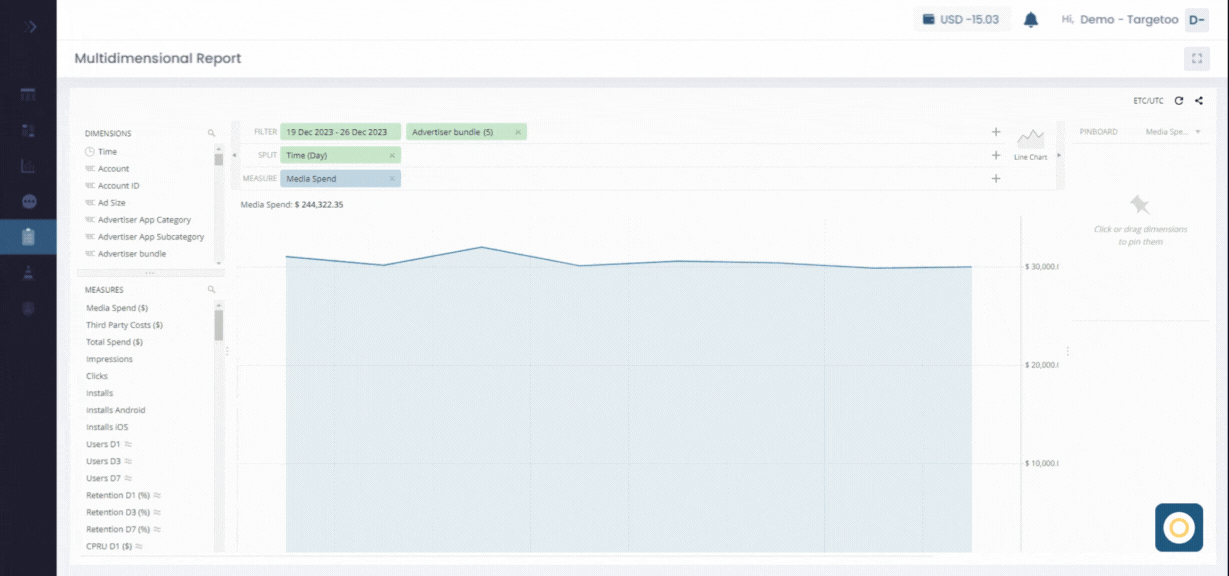The amount spent on internet political advertising has steadily increased since 2006. Thanks to the speed and scale that programmatic technologies provide, candidates have devised creative ways to interact with voters that were unthinkable in past election cycles.
Political campaigns using digital marketing provide a variety of ways to sway voters and a means of connecting with people where they spend most of their time—online.
The amount spent on advertising per vote in the US midterm elections in 2022 broke all previous records, even though voter turnout is usually lower. This trend is expected to continue until the 2024 election cycle when political advertising expenditure is anticipated to exceed USD 10 billion. In fact, by 2024, it's expected to surpass USD 11 billion.
5 Benefits of Digital Marketing For Political Campaigns
As we near the 2024 election, using digital plans can help your candidate get the results they wants. Here are five simple online marketing tricks for political campaigns.
Unlocking The Power of Digital Political Advertising
Digital political advertising is a powerful tool for political campaigns to reach and engage with voters in modern elections. It allows campaigns to tailor their messages to resonate with specific voter segments, maximizing their impact and amplifying their influence. By using data analytics and sophisticated targeting algorithms, candidates can optimize their advertising strategies to reach the most likely audiences. Mastering digital political advertising is essential for any campaign looking to secure victory at the polls, as online communication shapes public opinion and drives voter behaviour.
Reach a Wider and More Detailed Audience
Using programmatic advertising provides for successful interaction with voters across all platforms, ensuring messages reach them at the best times and locations. In the United States, where 302 million people are active internet users, the potential audience reach is enormous, providing several chances to target potential voters based on certain demographic parameters. Campaigns may directly engage with their intended voter base via programmatic advertisements by adjusting targeting characteristics such as geography, congressional district, or contextual relevance, ensuring that messages reach receptive audiences. This precision targeting improves the potential to contact the correct people at vital periods, hence increasing the effect of political campaigns.
Furthermore, programmatic advertising provides a strategic advantage by enabling campaigns to adapt messaging to specific goals while maximizing resource allocation. Political campaigns can use granular targeting capabilities to efficiently allocate resources toward contacting the most relevant voter segments, thereby enhancing the effectiveness of their outreach efforts.
Reach Voting Generations That Are Digitally Engaged
The majority of today's voters are active online. Understanding how each generation interacts with digital media, as well as their existing relationship with the political scene, will enable candidates to adapt their advertising efforts for the greatest outcomes.
Baby boomers constitute the largest segment of the voting-eligible populace, with older generations traditionally demonstrating higher voter turnout rates. However, the voting-eligible baby boomer cohort reached its pinnacle at 73 million in 2004, indicating a gradual decrease in their influence at the polls.
Generation X and Millennials are steadily gaining ground in terms of their representation within the American electorate, approaching the level of baby boomers. Since making a significant entrance into the electorate during the 2004 election, Millennials have consistently demonstrated increasing voter turnout. Their substantial participation in the 2020 US election suggests a trend likely to persist into the upcoming 2024 election cycle.
Generation Z, akin to Millennials, constitutes a generation actively engaged in the voting process. Renowned for their blend of social consciousness and practicality, these characteristics significantly influence their voting behaviours. Moreover, being recognized as the most diverse generation in US history, Generation Z's voter preferences are deeply informed by this aspect of their identity.
Forget flyers and mailboxes, reach voters Programmatically in 2024!
65% of US adults get their election news online. That's a huge audience you can tap into using cutting-edge digital formats:
1. Connected TV (CTV):
Explosive growth in CTV ads in the US has led to a massive reach, with nearly 70% of Americans expected to use it by 2024. Utilizing multiple ad formats and targeting the right voters ensures maximum impact.
2. Programmatic Audio:
Digital audio is gaining popularity, leading to increased ad spending. Audio ads deliver messages directly to users' ears, allowing for targeted reach beyond traditional radio limitations. They can target specific demographics, interests, and locations, and can be integrated with video, mobile, and cross-device campaigns for seamless integration.
Win the 2024 race with the right DSP features:
Early voting starts soon! Are you ready to launch your digital campaign with the firepower it needs? Choose a Demand-Side Platform (DSP) packed with features that'll help you plan, launch, and optimize like a pro:
1. Futureproof your budget with Forecasting: Want to know how your campaign will perform before you spend a dime? Get data-driven insights to strategize smarter and maximize your impact.
2. Seamless CRM Integration: Upload your voter data in a flash and use retargeting pixels to reconnect with interested supporters. Keep your campaign laser-focused and efficient.
3. Target Voters Where They Live: Reach voters at the state, zip code, or even district level with advanced geographical targeting. No wasted impressions, just focused messaging.
4. Go Micro with Geo Radius Targeting: Draw a virtual fence around campaign events, rallies, or key locations to capture nearby voters at the perfect moment.
5. Find Lookalike Voters: Uncover new supporters with shared interests and behaviours using lookalike audience building. Expand your reach without compromising relevance.
6. Speak to Their Interests: Use contextual targeting to deliver your message on relevant websites and pages. When voters are engaged, your message hits home.
7. Measure What Matters: Conduct candidate lift studies to gauge voter concerns, voting intentions, and candidate preference. Tailor your campaign based on real-time insights.
Launch Your Digital Marketing Political Campaigns
Digital ad spending on political campaigns is increasing, and the 2024 US presidential election is expected to continue this trend. To capitalize on this digital landscape, political advertisers should plan, prepare, and implement digital campaigns targeting the right voters. To learn more about political campaigns, request a demo from us.









































